PRODUCT OVERVIEW
Ansys Mechanical is a best-in-class finite element solver with structural, thermal, acoustics, transient and nonlinear capabilities to improve your modeling.
Product Features
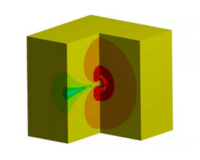
Linear Dynamics
Carry out acoustics simulations to understand the vibroacoustic behavior of systems, with or without structural pre-loading. Including pre-loading adds more fidelity and means that self-weighted, bolted assemblies — or even squealing brakes — can be simulated.
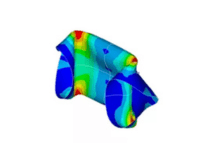
Nonlinearities
Nonlinear simulation also takes into account contact and large deflection of parts moving around relative to each other, either with or without friction.
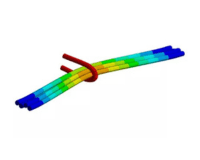
Contact
It can simulate everything from a bonded contact that treats joints between parts as if they are glued or welded together to contact interfaces that allow parts to move apart and together with or without frictional effects. Being able to simulate contact correctly means that you can simulate the change in load paths when parts deform and confidently predict how assemblies will behave in the real world.
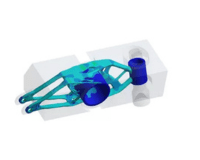
Structural Optimization
Any model in Ansys Mechanical can be used to drive a parametric optimization. Shape and topology optimization capabilities allow creation of efficient geometries, which can be taken back to CAD for production or further simulation work. Additive manufacturing, lightweighting and robust design are excellent use cases for this technology.
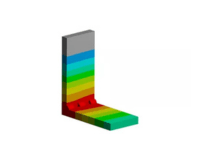
Thermal Analysis
With Ansys Mechanical, you can read in power losses or calculated temperatures from other analysis systems or files, which means that CFD or electromagnetic simulations can be a starting point for thermal analysis. It is also possible to account for fluid flow through pipes and heat generated from friction between parts. All these capabilities give you more accurate simulations and better results.
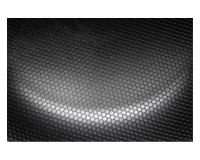
Materials
You can also add user-defined material models, if needed. Granta Materials Data for Simulation provides instant, clickable access to the materials property data you need, eliminating data search time and input errors. Material Designer can easily create representative volume elements (RVE’s) based around lattice, fiber, weave or user-created geometries to facilitate multiscale modeling of complex material structures.
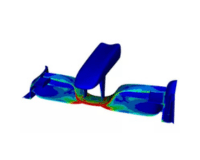
Composites
Ansys Mechanical includes capabilities to model layered composites through the connection with Ansys PrepPost (ACP) and short fiber composites through the connection with upstream manufacturing simulation tools and the material behavior obtained from Material Designer, the Ansys tool for multiscale homogenization of materials microstructures.
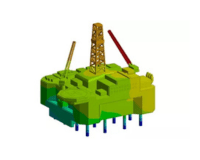
Hydrodynamics (Ansys Aqwa)
These include SPARs, FPSOs, semi-submersibles, tension leg platforms, ships, renewable energy devices and breakwaters. Our product, Ansys Aqwa, has been used extensively in the oil and gas, renewable and general engineering sectors to model installation and use of equipment in open water as well as in harbors or sheltered locations.
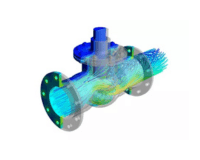
Fluid-Structure Interaction
One-way coupling solves the initial CFD or Ansys Mechanical simulation and automatically transfers and maps the data to the other system. In a two-way coupling simulation, the fluid and structural simulations are set up and solved at the same time and data is automatically transferred between two solvers to achieve robust and accurate results.

Customization and Scripting
The fastest, easiest way to tailor your simulation workflows. Customization inside Ansys Mechanical enables repetitive tasks or specific workflows to automate and shared amongst users. Journaling and scripting capabilities enable quick development and easy education of new scripts.
MODULES
Engineers Gain Answers Fast and With Confidence
Ansys Mechanical enables you to solve complex structural engineering problems and make better, faster design decisions. With the finite element analysis (FEA) solvers available in the suite, you can customize and automate solutions for your structural mechanics problems and parameterize them to analyze multiple design scenarios. Ansys Mechanical is a dynamic tool that has a complete range of analysis tools.
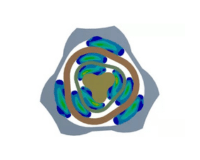
Range of Analytical Tools
Ansys Mechanical creates an integrated platform that uses finite element analysis (FEA) for structural analysis. Mechanical is a dynamic environment that has a complete range of analysis tools, from preparing geometry for analysis to connecting additional physics for even greater fidelity. The intuitive and customizable user interface enables engineers of all levels to get answers fast and with confidence.Ansys Workbench enables robust connection to commercial CAD tools, providing click button design point updates. Seamlessly integrated multiphysics capabilities are available with fluids and electrical solvers.

Key Features
Experience dynamic analysis and embrace advanced solver options across a variety of materials and functions
Linear Dynamics
Nonlinearities
Thermal Analysis
Materials
Composites
Hydrodynamics
Fluid-Structure Interaction
Customization and Scripting
Solve Management
High Performance Computing
Quick Specs
CAD Connected
Advanced Materials Modeling
Vibration
Coupled Field Technology
Automated Meshing Adaptivity (NLAD)
Explicit Analysis
Acoustics
Fast Parallel Solvers
Linear and Nonlinear Contact
Crack and Fracture Modeling
What’s New
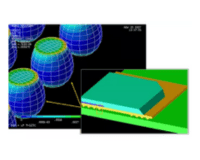
Simulation Supercharged
Ansys Mechanical introduces major GPU and HPC advancements, delivering 2-6x faster solving with GPU-accelerated solvers and 2-3x speedups over CPU-only versions. Features include multi-GPU support, enhanced symmetric/nonsymmetric matrices solvers, and a new ‘mixed’ solver that reduces memory requirements by 25%, ensuring rapid, reliable results for the most demanding simulations.
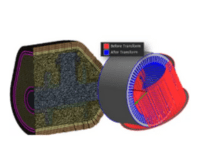
Integrated NVH Solutions
Ansys provides the only fully integrated NVH solution, delivering 10x faster FRF calculations, vibro-acoustics mapping, optimized meshing, and Mode Contribution analysis. Enhanced durability capabilities include advanced solvers, better performance and scaling, and DesignLife integration, ensuring comprehensive durability analysis for full-vehicle applications and streamlined workflows for efficient NVH problem-solving.
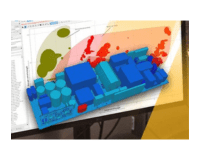
Real-world results
Ansys introduces consistent solver advancements: MCalibration ensures accurate real-world material modeling, SMART provides customizable crack growth analysis under complex loads, and ACCS RTM enables precise composite infusion simulations. These tools enhance simulation fidelity, allowing users to tackle challenging engineering problems with confidence and achieve highly accurate results in demanding scenarios.
Applications
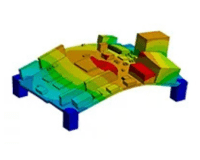
Electronics Reliability
Learn how Ansys integrated electronics reliability tools can help you solve your biggest thermal, electrical and mechanical reliability challenges.

Turbomachinery
Ansys rotating machinery simulation helps you to improve your designs of fans, pumps, and compressors by increasing efficiency, safety and durability.
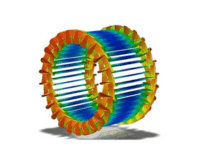
Electric Motors
Ansys electric motor design software progresses from concept design to detailed electromagnetics, thermal and mechanical analysis of electric Moters
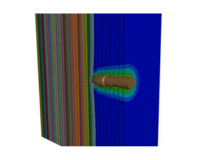
Battery Structural Reliability
To ensure battery durability, reliability and safety, Ansys offers simulation solutions for optimizing housing designs and reinforcements for safer.
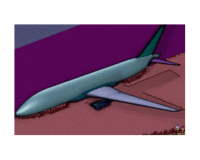
Meshing
Ansys provides high-performance, automated meshing software that produces the most appropriate mesh for FEA, CFD and other multiphysics solution.

Rotating Machinery
Ansys rotating machinery simulation helps you to improve your designs of fans, pumps, and compressors by increasing efficiency, safety and durability.
Case Study
FAQ
What is Ansys Mechanical?
Ansys Mechanical is a finite element analysis (FEA) software used to perform structural analysis using advanced solver options, including linear dynamics, nonlinearities, thermal analysis, materials, composites, hydrodynamic, explicit, and more. Mechanical offers a user-friendly, dynamic environment with a complete range of analysis tools, from preparing geometry to connecting other physics for high-fidelity simulations and optimization.
Mechanical is known for its customization and scripting capabilities, enabling users to automate repetitive tasks and workflows.
How can I learn Ansys Mechanical?
Ansys offers a variety of options for users of all skill levels to learn how to use Ansys Mechanical. If you are interested in enhancing your simulation and general physics knowledge of structures, Ansys offers Ansys Innovation Courses, which are free courses that will teach you the underlying physics in a problem and how Mechanical is used to help solve this problem.
For introductory product-specific step-by-step tutorials, new feature videos, and general tips & tricks, we have the Ansys How to Videos on YouTube.
The Ansys Learning Hub provides you with all the training resources needed to learn Ansys Mechanical from the ground up. The Learning Hub has self-paced video courses, CAD models, best practice guides, demo videos, and learning rooms for questions and discussions to learn from the Ansys experts.
How do I open APDL from Ansys Mechanical?
There are several ways to open and access APDL, including through Ansys Workbench, the Start Menu, the APDL product launcher, and the command line.
The preferred method to open APDL is through the product launcher from the Windows Start Menu, so that a user can customize the product settings, including simulation environment and license, working directory, customization, high-performance computing setup, and more.
Opening through Workbench is recommended if the user intends to share the files from MAPDL with other Workbench models. Opening through the Windows Start Menu launches a standalone MAPDL session using the default product settings.
How do I use symmetry in Ansys Mechanical?
Symmetry in Ansys Mechanical enables users to only model a portion of the structure they are simulating to achieve faster simulation and post-processing results. Users can implement Symmetry if the geometry, material orientation, loading, and expected response all exhibit symmetry about the same planes.
To use Symmetry in Ansys Mechanical, you can either select the Model folder under your current project, navigate to the Model tab, and select Symmetry, or right-click on the Model folder and choose Insert then Symmetry. Both options above will insert a symmetry folder object where different types of Symmetry can be added.
Based on analysis type and symmetry needs, the following Symmetry objects can be inserted: symmetry region, linear periodic, periodic region, cyclic region, and pre-mesh cyclic region.
How do I download Ansys Mechanical?
Current customers can download Ansys Mechanical from the Download Center in the Ansys Customer Portal.
If you are a student, you can download our free student software and use it along with our free courses, support community, and a wealth of student-focused tutorials.
What is Ansys Mechanical APDL?
Ansys Parametric Design Language, or APDL, is a powerful, structured scripting language used to interact with the Ansys Mechanical solver. Mechanical APDL, or MAPDL, is a finite element analysis program driven by APDL.
Both APDL and MAPDL can be used for various tasks ranging from creating geometries to setting up sophisticated solver settings for highly complex analyses. APDL provides access to advanced features and capabilities of Ansys Mechanical that may not be exposed or available through the graphical user interface (GUI).
With APDL, users can create custom input files, define material properties, apply boundary conditions and loads, customize the solution process, and more to tailor the analysis to their specific needs.
How do I reset Ansys Mechanical layout?
The Ansys Mechanical layout can be reset by simply navigating to the Home tab at the top of the Mechanical user interface and clicking the Reset Layout button on the far right side.

